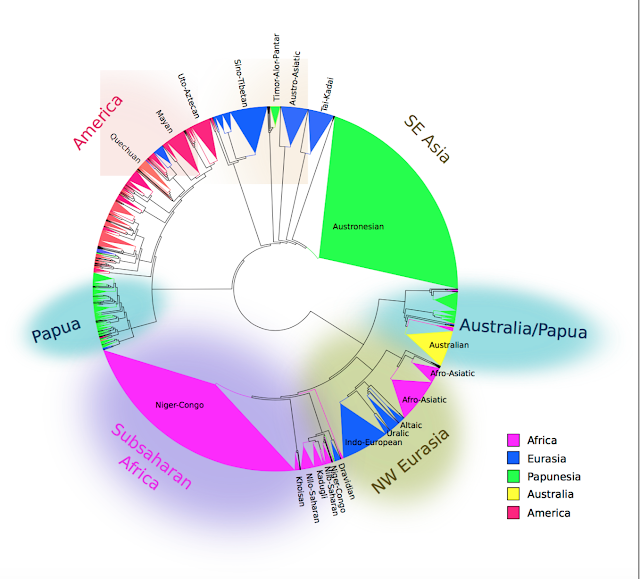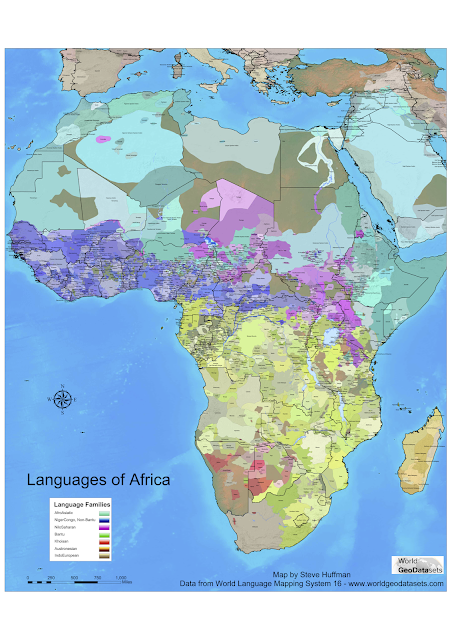Listen and watch the world's languages!
There is a site called Language Landscape where you can listen and see languages of the world by navigating audio samples on a map. They're currently offering 357 samples, both audio and video (because remember: sign language!!), go check it out and contribute your own! It's super awesome.
Well, guess what the Language Landscape does? Exactly that! I've just come back from SOAS in London where I met a certain Samantha Goodchild that works on Language Landscape and told me about the site. Such cool stuff, y'all go contribute, listen and watch now!
While you're at it you should also go to Paul Heggarty and Colin Renfrew's site Sound Comparisions where you can hear cognate sets from lots of languages. Cognate sets are words with a shared origin, like "dotter" in Swedish and "daughter" in English. Here's a little taste of Sound Comparisons, cognates of the word "right".
I've got a third source for you to listen to the worlds languages. Do you remember the Great Language Game? It's a very cool game where you can compete in recognizing languages of the world by labeling audio samples. I wrote a blog post about it with Seán Roberts at Reduplicated Typo some time ago. The creator of that game, Lars Yencken, has also made it possible to listen to all the languages freely here.
And a fourth! You can get better at recognizing languages by hearing with Langscapes Language Familiarization game!
In short, there are lots of ways for you to improve your skills in recognizing languages in your local public transport and impress your friends. Also, you'll become a better person from it. Go do it, do it now.
You remember sometime ago when Jeremy Collins wrote a post here in connection with a workshop on cross-lingusitic databases and wrote that he would like to see data points tied to specific speakers and geographical coordinates, as one possible solution.
Well, guess what the Language Landscape does? Exactly that! I've just come back from SOAS in London where I met a certain Samantha Goodchild that works on Language Landscape and told me about the site. Such cool stuff, y'all go contribute, listen and watch now!
While you're at it you should also go to Paul Heggarty and Colin Renfrew's site Sound Comparisions where you can hear cognate sets from lots of languages. Cognate sets are words with a shared origin, like "dotter" in Swedish and "daughter" in English. Here's a little taste of Sound Comparisons, cognates of the word "right".
And a fourth! You can get better at recognizing languages by hearing with Langscapes Language Familiarization game!
In short, there are lots of ways for you to improve your skills in recognizing languages in your local public transport and impress your friends. Also, you'll become a better person from it. Go do it, do it now.




Comments
Post a Comment